The Guide to Garden Storage Boxes: Choosing, Using, and Maintaining Your Outdoor Storage Solution
Declutter your outdoor space and protect your belongings with the perfect garden storage box. This UK guide covers types, features, choosing the right one, installation, and care.
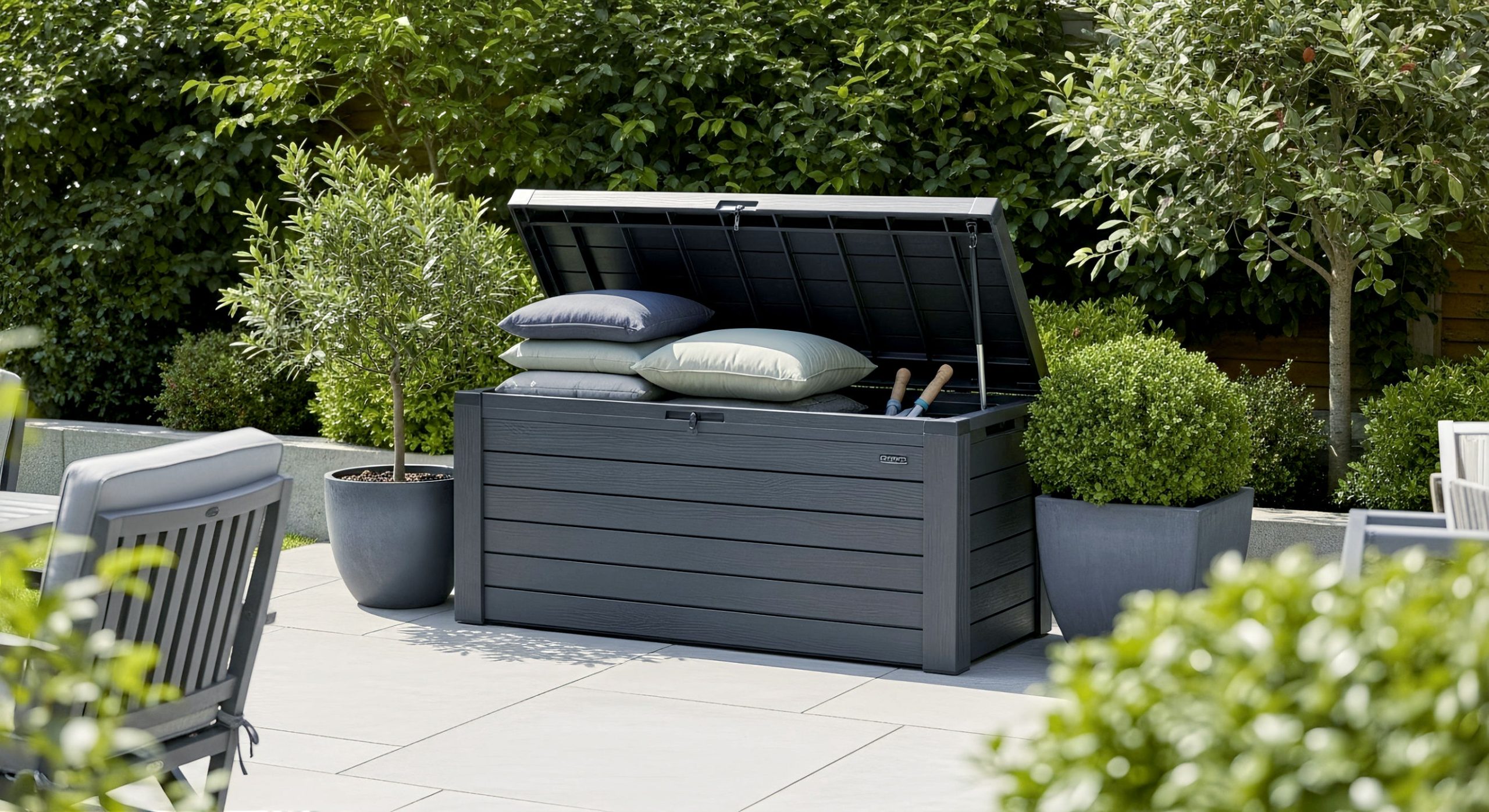
This post may contain affiliate links. If you make a purchase through these links, we may earn a commission at no additional cost to you.
Is your garden looking a bit cluttered? Are cushions, tools, and toys scattered across your patio or lawn? You’re not alone. Many homeowners in the UK face the challenge of keeping their outdoor spaces tidy and functional. That’s where a garden storage box comes in. These versatile outdoor storage solutions are far more than just simple containers; they’re essential for decluttering your garden, protecting your belongings, and enhancing your outdoor living experience.
This comprehensive guide will walk you through everything you need to know about garden storage boxes. We’ll explore the different types available, delve into key features, help you choose the perfect box for your specific needs, and even provide tips on installation, maintenance, and innovative uses. By the end, you’ll be well-equipped to make an informed decision and transform your garden into a neat, organised, and inviting haven.
Why You Need a Garden Storage Box: Beyond Just Tidiness
A garden storage box offers a surprising array of benefits that go far beyond simply tidying up. They play a crucial role in creating a more enjoyable and functional outdoor environment.
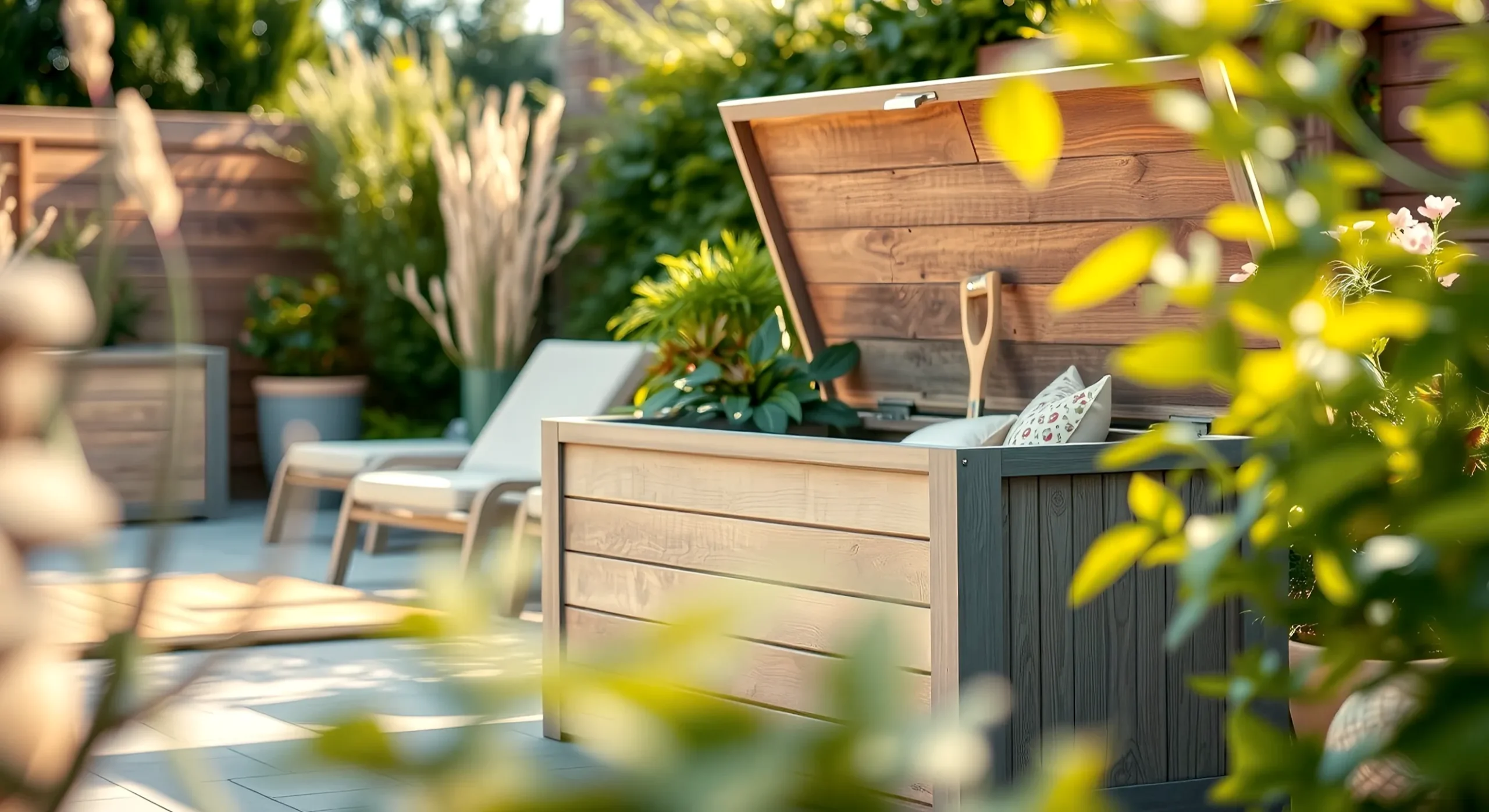
Maximising Outdoor Space
One of the most immediate benefits of an outdoor storage box is its ability to reclaim valuable outdoor space. Patios, decks, and even lawns can quickly become overrun with garden essentials like seating cushions, children’s toys, gardening tools, or even barbecue accessories. By providing a dedicated, discreet home for these items, you free up floor space, making your garden feel larger, more open, and far more inviting. Imagine a patio clear of clutter, ready for entertaining or simply relaxing without tripping over stray items.
Protecting Your Valuables
The British weather can be unpredictable, to say the least. Rain, wind, and even strong sunlight can quickly damage outdoor cushions, rust metal tools, or degrade plastic toys. A high-quality weatherproof garden storage box acts as a robust shield, safeguarding your belongings from the elements. This protection extends beyond just weather; it also keeps items safe from dirt, dust, and even pests like mice or insects that might otherwise find a home in exposed items. This means your garden furniture cushions stay dry and mould-free, and your tools remain in good working order for longer.
Enhancing Garden Aesthetics
Let’s be honest, a cluttered garden isn’t a pretty sight. Piles of garden waste, exposed tools, or stacks of outdoor toys can detract significantly from your garden’s overall appeal. A well-chosen garden storage box, especially one that complements your existing garden design, helps to keep these unsightly items out of sight. This immediately elevates the aesthetic appeal of your outdoor space, creating a more harmonious and visually pleasing environment. It allows the beauty of your plants, landscaping, and garden furniture to truly shine.
Versatility and Multi-functionality
Many modern garden storage boxes aren’t just for storage; they’re designed with multi-functionality in mind. A common feature is a reinforced lid, allowing the box to double as a convenient outdoor bench or extra seating. This is particularly useful for smaller gardens where space is at a premium, as it means one item can serve two purposes. Some designs even incorporate built-in shelving or dividers, further enhancing their utility and helping you organise contents more effectively. This adaptability makes them an incredibly practical addition to any garden.
Understanding Garden Storage Box Types: A Material World
When you’re looking for the perfect garden storage solution, one of the first things you’ll notice is the wide variety of materials used. Each material offers distinct advantages and disadvantages in terms of durability, aesthetics, maintenance, and cost. Understanding these differences is key to choosing a box that truly meets your needs.
Plastic Garden Storage Boxes: The Durable and Low-Maintenance Choice
Plastic garden storage boxes are arguably the most popular choice for many UK homeowners, and for good reason. They offer an excellent balance of practicality, affordability, and resilience.





Materials and Properties
Most plastic garden storage boxes are manufactured from high-density polyethylene (HDPE) or polypropylene (PP). These are both types of thermoplastic polymers known for their robust properties. HDPE is particularly valued for its strength-to-density ratio, meaning it's strong and rigid while remaining relatively lightweight. It's also highly resistant to impacts, chemicals, and moisture absorption. Polypropylene (PP) is another common choice, known for its good fatigue resistance (it can withstand repeated bending without breaking) and its ability to be moulded into various shapes.
A critical feature of quality plastic boxes is UV stabilisation. This is a chemical additive mixed into the plastic during manufacturing that helps to protect the material from the degrading effects of ultraviolet (UV) radiation from sunlight. Without UV stabilisation, plastic can become brittle, crack, and discolour (often turning a chalky white or grey) over time. This technical detail ensures the plastic retains its structural integrity and colour even after years of exposure to the sun.
Pros of Plastic Storage Boxes
Cons of Plastic Storage Boxes
Wooden Garden Storage Boxes: Natural Beauty and Robustness
For those who prioritise natural aesthetics and a classic garden look, wooden garden storage boxes are an excellent choice. They blend seamlessly into natural surroundings and can add a touch of rustic charm or elegant sophistication.


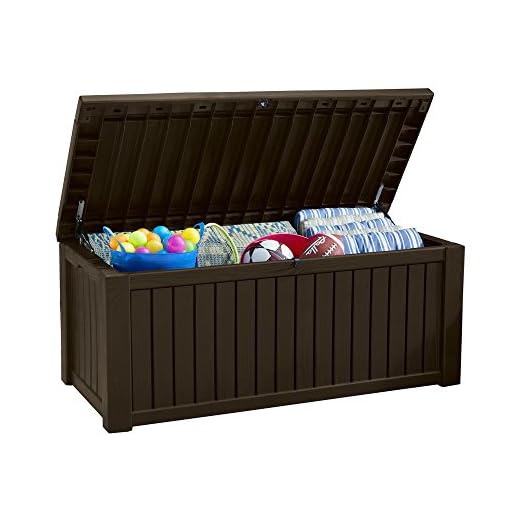
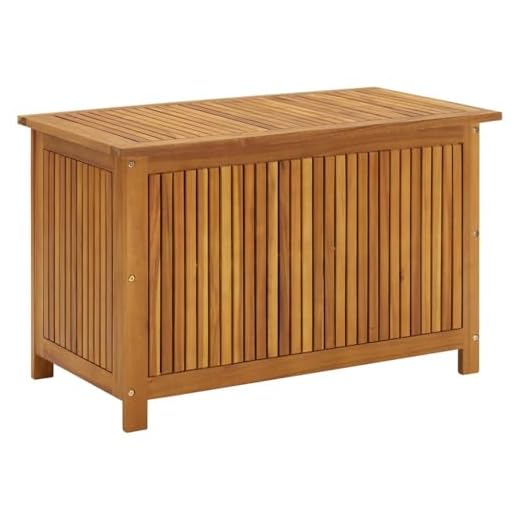
Materials and Properties
Wooden garden storage boxes are typically made from treated timber, such as pine or spruce. These softwoods are readily available and relatively easy to work with. However, for outdoor use, they must be treated to protect them from rot, fungal decay, and insect infestation. The most common treatment method is pressure treatment (sometimes referred to as "tanalised" timber). This process involves placing the timber in a large cylinder, removing air, and then forcing a preservative solution deep into the wood fibres under high pressure. This creates a long-lasting barrier against decay.
More premium wooden boxes might use naturally durable woods like cedar or various hardwoods. Cedar, for instance, contains natural oils that make it inherently resistant to rot and insects, giving it excellent longevity without extensive chemical treatments. Hardwoods like oak or iroko are incredibly dense and durable but come at a significantly higher cost.
Pros of Wooden Storage Boxes
Cons of Wooden Storage Boxes
Metal Garden Storage Boxes: Security and Industrial Strength
If security and ultimate durability are your top priorities, a metal garden storage box might be the ideal choice. These boxes offer a robust solution for protecting more valuable items.


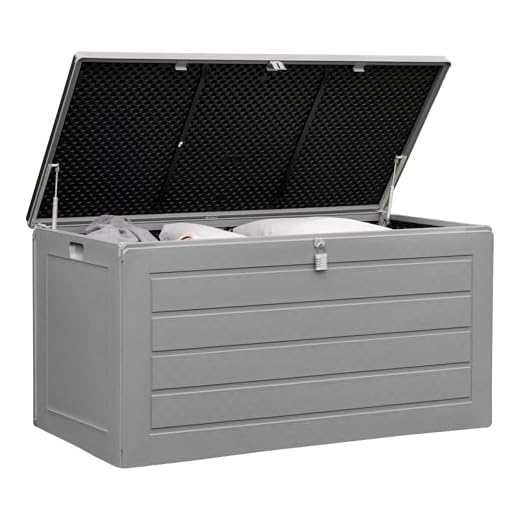
Materials and Properties
The most common material for metal garden storage boxes is galvanised steel. Galvanisation is a process where a protective zinc coating is applied to steel to prevent rusting. This is typically done by hot-dip galvanising, where the steel is immersed in a bath of molten zinc. The zinc acts as a sacrificial layer, corroding before the steel does, thereby protecting it. This process creates a highly durable and corrosion-resistant finish. Some higher-end metal boxes might use aluminium, which is naturally rust-resistant and lighter than steel but generally more expensive.
Pros of Metal Storage Boxes
Cons of Metal Storage Boxes
Wicker/Rattan Garden Storage Boxes: Style Meets Function
For those who want their storage to be an integral part of their garden's decorative scheme, rattan garden storage boxes offer a stylish and often luxurious option. They often complement existing rattan garden furniture sets.




Materials and Properties
While you might occasionally find natural wicker boxes, the vast majority of outdoor "wicker" or "rattan" storage boxes are made from synthetic rattan. This material is typically woven polyethylene (PE) or polypropylene (PP) strands over an aluminium or steel frame. Synthetic polyethylene rattan is specifically designed for outdoor use. It's UV-resistant, water-resistant, and much more durable than natural wicker, which would quickly degrade in outdoor conditions. The woven nature provides flexibility and a distinctive aesthetic.
Pros of Wicker/Rattan Storage Boxes
Cons of Wicker/Rattan Storage Boxes
Key Features to Look For: Making an Informed Decision
Once you've considered the material, it's time to delve into the specific features that differentiate one outdoor storage box from another. Paying attention to these details will ensure you select a box that looks good and performs exactly as you need it to.
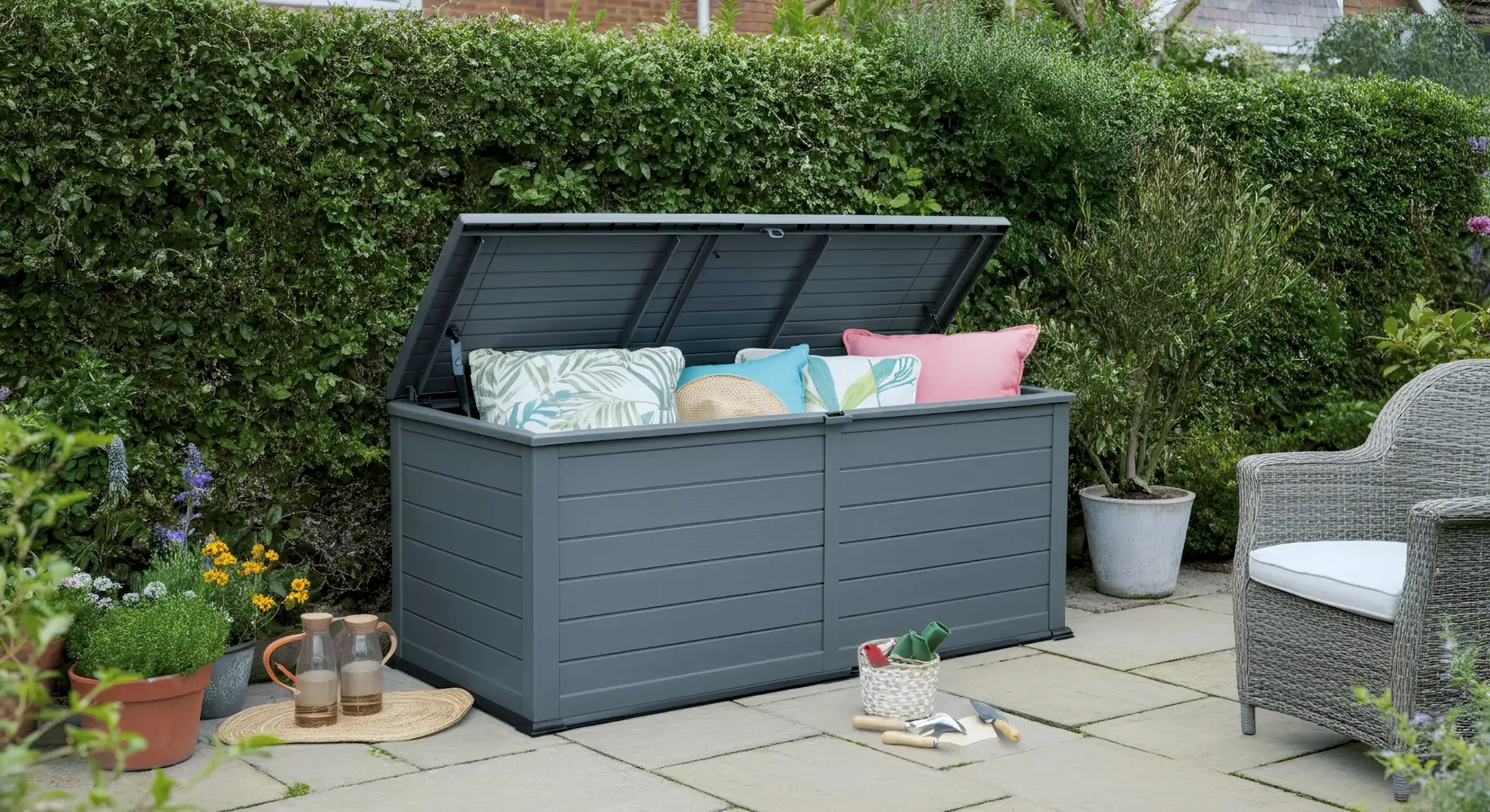
Capacity and Size: How Much Space Do You Really Need?
This is perhaps the most critical practical consideration. There's no point buying a box if it can't hold everything you intend to store.
Measuring Your Needs
Before you even start looking, take stock of the items you want to store. Measure their dimensions (length, width, height) and consider their overall volume. Are you storing bulky items like large garden furniture cushions, or smaller, numerous items like gardening tools and children's toys?
Garden storage box capacity is typically measured in litres (L) or cubic feet (cu ft). A larger number indicates more internal space. Common sizes range from small (around 100-200L, suitable for a few cushions or small tools) to extra-large (500L+ for multiple cushion sets, large tools, or even smaller garden machinery). For example, a 300-litre box might comfortably hold a set of four standard chair cushions, while a 500-litre box could accommodate a full sofa cushion set. Don't just estimate; physically measure your items to ensure a proper fit.
Available Space
Also, consider the physical space where you plan to place the box. Measure the available length, width, and height to ensure the box will fit comfortably without obstructing pathways or views. Remember to account for the lid opening – if it opens upwards, you'll need sufficient clearance above the box.
Waterproofing and Weather Resistance: Keeping Contents Dry
The primary function of an outdoor storage box is to protect its contents from the elements. True waterproof garden storage is essential, especially in the UK's climate.
Seals and Overlaps
Look for boxes with tight-fitting lids that create a secure seal when closed. Many quality plastic boxes feature an overlap design where the lid extends over the base, effectively shedding water. Even better are boxes with integrated rubber or silicone seals around the rim of the lid. These gaskets create a watertight barrier, preventing rain from seeping in. While no outdoor item is truly "submarine-proof," these features significantly reduce the risk of water ingress.
Ventilation
Paradoxically, while you want to keep water out, you also need to manage internal moisture. Good boxes incorporate subtle ventilation points, often discreetly placed under the lid or at the base. These aren't large holes that let water in; rather, they're designed to allow air circulation, preventing the build-up of condensation. Without adequate ventilation, trapped moisture can lead to mould, mildew, and unpleasant odours, especially for fabric items like cushions.
Durability and Construction: Built to Last
A garden storage box is an investment, and you want it to withstand years of outdoor exposure.
Material Thickness and Reinforcement
For plastic boxes, thicker walls generally indicate greater durability and rigidity. Look for designs with reinforced lids – particularly important if you plan to use the box as a seat. Metal boxes should have a substantial gauge of steel. Wooden boxes should use thick, pressure-treated timber with robust jointing. Strong, rust-resistant hinges (often stainless steel) are also a sign of quality, as weak hinges are a common point of failure.
UV Stabilisation
As mentioned earlier, for plastic boxes, UV stabilisation is non-negotiable. This additive protects the plastic from becoming brittle and discoloured due to sun exposure. Without it, even the most robust plastic will degrade over time. For metal boxes, ensure the galvanisation or protective coating is thorough and applied evenly to prevent premature rusting.
Security Features: Protecting Your Belongings
If you're storing valuable items like power tools, expensive garden equipment, or even children's bikes, secure garden storage is a must.
Padlock Compatibility
Most garden storage boxes come with a padlock loop or a reinforced hasp that allows you to attach a standard padlock. Look for designs where the loop is sturdy and integrated into the box's structure rather than a flimsy add-on. Some higher-end models might feature internal locking mechanisms or even multi-point locking systems, similar to those found on sheds.
Reinforced Clasps
The clasps that hold the lid down should be robust and not easily prised open. Metal clasps are generally more secure than plastic ones. Consider the overall design; a box with a heavy, well-fitting lid is inherently more secure than one with a lightweight, easily manipulated cover.
Accessibility and Opening Mechanisms
How easy is it to open and close the box, especially when it's full?
Hinged Lids
The most common opening mechanism is a hinged lid. Look for strong, durable hinges that can withstand repeated use. Some larger boxes benefit from piston-assisted opening mechanisms (gas struts). These hydraulic pistons make lifting heavy lids effortless and hold the lid open safely while you retrieve or store items, preventing it from slamming shut on your hands. This is a significant convenience feature, especially for larger boxes.
Front-Opening Doors
While most garden storage boxes are top-opening, some larger models or those designed for specific purposes (like bin stores) feature front-opening doors. These can be useful if you need to access items frequently without lifting a heavy lid, or if the box is placed in a confined space where a top-opening lid would be impractical.
Mobility and Portability
Do you need to move your garden storage box frequently?
Wheels and Handles
Many plastic garden storage boxes, particularly medium to large sizes, come equipped with integrated wheels on one side and a handle on the other. This allows you to tilt and roll the box, making it much easier to move it around your patio or garden, even when it's full. For heavier wooden or metal boxes, portability is less common, but some may have recessed handles for two-person lifting.
Additional Functionality: More Than Just a Box
Modern garden storage boxes are increasingly designed to offer more than just simple storage.
Seating Capabilities
As mentioned, many boxes feature reinforced lids that are strong enough to support the weight of one or more adults, effectively turning the box into a garden storage bench. This is an excellent space-saving solution and adds extra seating for guests. Always check the manufacturer's specifications for the maximum weight capacity if you intend to use it for seating.
Integrated Shelving or Dividers
Some larger boxes come with internal shelving or removable dividers. These features help you organise your contents more efficiently, separating different types of items (e.g., gardening gloves on one shelf, small tools below) and preventing them from becoming a jumbled mess. This can significantly improve the usability of the box.
Choosing the Right Garden Storage Box for Your Needs: A Practical Guide
With so many options available, selecting the perfect garden storage solution can feel a bit overwhelming. By following a structured approach, you can narrow down your choices and find a box that perfectly matches your requirements.
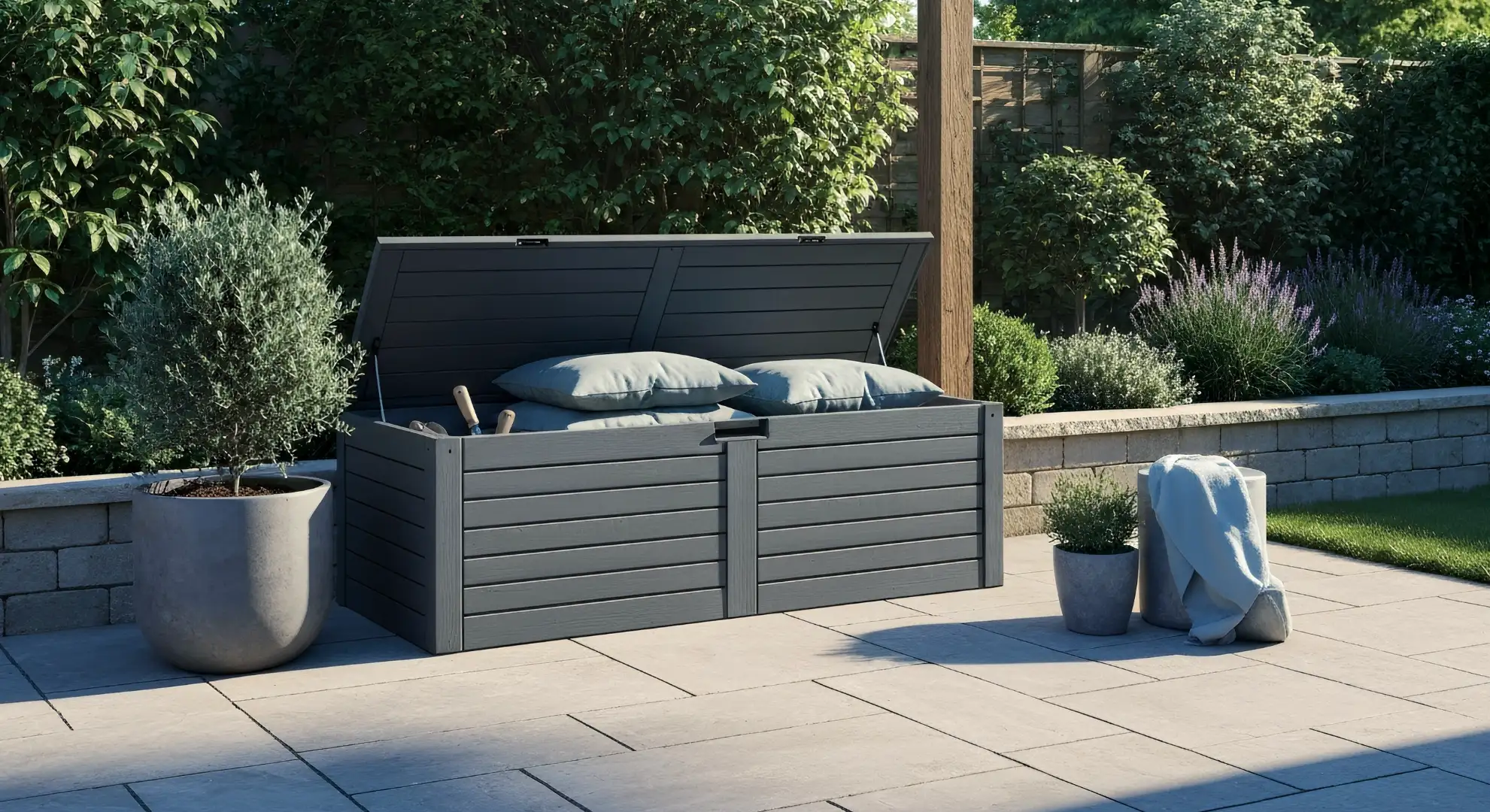
Assess Your Storage Needs: What Are You Storing?
The first and most crucial step is to clearly define what you intend to store. This will dictate the size, material, and features you need.
- Garden Furniture Cushions: These are often bulky. You'll need a large, waterproof box, ideally with good ventilation to prevent mould. Plastic or synthetic rattan with a liner are common choices.
- Gardening Tools: Hand tools, secateurs, trowels, small pots. Security might be a concern here, so a metal or robust plastic box with a padlock facility is ideal.
- Children's Outdoor Toys: Balls, sandpit toys, buckets. A durable, easy-to-clean plastic box is usually best. Consider one with wheels for easy access for kids.
- Barbecue Accessories: Covers, cleaning brushes, charcoal. A waterproof box near your barbecue area is convenient.
- Firewood/Logs: You'll need a very robust, well-ventilated box that can handle weight. Wooden or metal options are suitable, but ensure good airflow to prevent dampness.
- Recycling Bins/Wheelie Bins: Specific bin storage boxes are designed to discreetly hide unsightly bins, often with front-opening doors and easy lid access.
- Sports Equipment: Footballs, tennis rackets, small bikes. Consider size and security.
Consider Your Garden Space: Where Will It Go?
The location of your outdoor storage box is just as important as what goes inside it.
- Patio/Decking: If it's going on a visible patio or deck, aesthetics will be a key factor. A stylish rattan or attractive wooden box might be preferred. Ensure it doesn't block pathways or views.
- Lawn: If it's on the lawn, ensure the ground is level to prevent instability and water pooling underneath. Consider a base like paving slabs to lift it slightly off the grass.
- Next to a Shed/Wall: If it's tucked away, the aesthetic might be less critical, allowing you to prioritise pure functionality or cost-effectiveness. Ensure there's enough room for the lid to open fully.
- Small Garden: For limited spaces, a garden storage bench that doubles as seating is an excellent space-saving solution.
Match Your Garden's Style: Aesthetic Considerations
Your garden storage box doesn't have to be an eyesore. It can be an integrated part of your garden's design.
- Traditional/Cottage Garden: A classic wooden box, perhaps painted a soft green or cream, would blend beautifully.
- Modern/Contemporary Garden: Sleek plastic designs, metal boxes, or dark grey/black rattan options can complement a minimalist or urban garden.
- Natural/Rustic Garden: Untreated or lightly stained wooden boxes, or those with a wood-effect plastic finish, will fit right in.
Budgeting for Your Box: Price Ranges
Garden storage boxes vary widely in price, typically from around £50 for a basic small plastic model to several hundred pounds for large, premium wooden, metal, or rattan options with advanced features.
- Entry-Level (Under £100): Usually smaller plastic boxes, good for basic cushion storage or toys.
- Mid-Range (£100-£300): Larger plastic boxes with more features (piston lids, wheels), some treated wooden options, and basic synthetic rattan.
- Premium (£300+): Large, highly durable plastic boxes, high-quality wooden boxes (cedar, hardwoods), robust metal boxes, and luxurious synthetic rattan designs often with seating capabilities.
Determine your budget early on, but remember that investing a little more upfront for quality can save you money in the long run by avoiding premature replacement.
Assembly Considerations: DIY vs. Pre-assembled
Most garden storage boxes come flat-packed and require assembly.
- DIY Assembly: This is common for plastic and wooden boxes. Instructions are usually clear, but it can take anywhere from 30 minutes to a few hours, depending on the size and complexity. You'll typically need basic tools like a screwdriver.
- Pre-assembled: Some higher-end wooden or metal boxes might come pre-assembled or with partial assembly, reducing the effort required on your part. However, these are often more expensive and harder to transport.
Check reviews for ease of assembly if you're not confident with DIY. Many plastic boxes feature "click-together" designs that require minimal tools.
Installation and Placement Tips: Getting It Right
Once you've chosen your ideal garden storage box, proper installation and placement are crucial for its longevity and performance. A little preparation can prevent common issues like water ingress, instability, and mould.
Site Selection: Flat, Level Ground is Key
The most important rule for placing any outdoor storage unit is to ensure it sits on a flat, level, and stable surface.
- Why it matters: If the ground is uneven, the box can become warped or twisted over time. This can prevent the lid from closing properly, compromising its waterproofing and potentially damaging the structure. An uneven base can also lead to instability, making the box wobbly and potentially unsafe, especially if it's being used as seating.
- Away from Run-off: Position the box in an area where water doesn't naturally pool or run off during heavy rain. Avoid placing it directly at the bottom of a slope or under a leaky gutter. While the box itself is designed to be waterproof, prolonged exposure to standing water at its base can compromise materials over time, particularly for wooden boxes.
Ground Preparation: Creating a Stable Base
To ensure a stable and dry foundation, consider preparing the ground beneath your box.
- Paving Slabs or Decking: The ideal solution is to place the box on an existing patio, decking area, or on dedicated paving slabs. These provide a perfectly level, hard, and well-drained surface, lifting the box off damp ground.
- Gravel Base: If placing on a lawn or soil, consider creating a small gravel pad. Dig out a shallow area, lay down a weed membrane, and fill with compacted gravel. This provides drainage and prevents the base of the box from sitting directly on wet soil, which is especially beneficial for wooden boxes.
- Feet or Risers: Some boxes come with integrated feet, or you can place small, rot-proof risers (like plastic blocks or treated timber offcuts) under the corners. This elevates the base slightly, allowing air to circulate underneath and preventing moisture transfer from the ground.
Assembly Best Practices: Following Instructions Carefully
Most garden storage boxes are flat-packed, so proper assembly is vital.
- Read the Instructions: Don't skip this step! Manufacturers' instructions are designed to guide you through the process efficiently and correctly. They'll highlight critical steps and specific fixings.
- Check All Fixings: Before you start, lay out all the components and check them against the parts list. Ensure you have all the screws, bolts, panels, and hinges required. If anything is missing, contact the retailer before proceeding.
- Don't Overtighten: Especially with plastic boxes, overtightening screws can strip the plastic or cause it to crack. Tighten them firmly but avoid excessive force. For wooden boxes, pre-drilling pilot holes can prevent splitting.
- Two-Person Assembly: For larger or heavier boxes, having a second person to help hold panels in place can make assembly much easier and safer.
Ventilation and Airflow: Preventing Condensation and Mould
Even in a waterproof garden storage box, condensation can be an issue if there isn't adequate airflow.
- Built-in Vents: As discussed, many quality boxes have discreet ventilation points. Ensure these aren't blocked by placing the box too flush against a wall or by overfilling it.
- Don't Seal Completely: While you want to keep rain out, avoid trying to make the box completely airtight. A small amount of airflow is necessary to prevent humid air from becoming trapped inside, especially when storing items that might release moisture (like damp garden tools or recently washed cushions that aren't fully dry).
- Allow Items to Dry: Always ensure items are as dry as possible before storing them. Putting damp cushions or muddy tools into a sealed box is a sure way to encourage mould and mildew growth. If items are slightly damp, leave the lid ajar for a short period on a dry day to allow air circulation before fully closing.
By paying attention to these installation and placement tips, you'll ensure your garden storage box remains stable, dry, and functional for many years to come.
Maintenance and Care: Extending the Life of Your Garden Storage Box
Even the most durable outdoor storage solution will benefit from regular care. Proper maintenance not only keeps your box looking good but also significantly extends its lifespan, protecting your investment and the items stored inside.
General Cleaning: Simple and Effective
Regardless of the material, all garden storage boxes will accumulate dirt, dust, and possibly bird droppings over time.
- Regular Wipe-Downs: A simple wipe-down with a damp cloth and mild detergent (like washing-up liquid) is usually sufficient for general cleaning. This prevents grime from building up and becoming harder to remove.
- Hose Down: For a quick clean, especially after a particularly dusty or muddy period, you can hose down the exterior of most boxes. Just ensure the lid is securely closed to prevent water ingress.
- Avoid Harsh Chemicals: Steer clear of abrasive cleaners, bleach, or high-pressure washers, as these can damage the material, strip protective coatings, or compromise seals.
Plastic Boxes: The Easiest to Maintain
Plastic garden storage boxes are renowned for their low maintenance requirements.
- Soap and Water: A solution of warm water and a mild dish soap is usually all you need. Use a soft brush or sponge to clean the surfaces.
- Rinse Thoroughly: After cleaning, rinse the box thoroughly with clean water to remove any soap residue, which can attract dirt.
- Stubborn Stains: For more stubborn marks, a non-abrasive household cleaner designed for plastics can be used, but always test it on an inconspicuous area first.
- UV Protection: While most quality plastic boxes are UV-stabilised, you can occasionally apply a UV protectant spray (available from car care or outdoor product stores) to give an extra layer of defence against sun degradation, especially if the box is in direct, intense sunlight year-round.
Wooden Boxes: The Most Demanding, But Rewarding
Wooden garden storage boxes require the most attention, but their natural beauty makes the effort worthwhile.
- Annual Re-treatment: This is the most critical maintenance task. Wood needs to be protected from moisture and UV radiation to prevent rot, decay, and discolouration.
- Wood Preservative: Apply a good quality wood preservative annually or biennially. These penetrate the wood, protecting it from fungal decay and insect attack.
- Stain or Paint: If you want to maintain a specific colour or finish, apply an exterior wood stain or paint. These also provide a protective layer against the elements. Always ensure the wood is clean and dry before applying.
- Checking for Rot and Pests: Periodically inspect the wood for any signs of rot (soft, spongy areas), cracks, or insect activity (small holes, sawdust trails). Address any issues promptly by repairing, treating, or replacing damaged sections.
- Tighten Fixings: Over time, wood can expand and contract with temperature changes, potentially loosening screws. Periodically check and tighten all fixings to ensure the box remains sturdy.
Metal Boxes: Guarding Against Rust
While durable, metal garden storage boxes need vigilance against rust.
- Check for Scratches/Dents: Regularly inspect the box for any scratches, dents, or areas where the protective galvanised coating might have been compromised. These are potential entry points for moisture, leading to rust.
- Touch-Up Paint: If you find any exposed metal, clean the area thoroughly and apply a rust-inhibiting primer followed by a suitable exterior metal paint. Many manufacturers provide touch-up kits.
- Keep Clean and Dry: Like other materials, keep the metal box clean. Ensure no water is pooling on the lid or base, as prolonged dampness can accelerate corrosion.
Wicker/Rattan Boxes: Gentle Cleaning and Liner Care
Rattan garden storage (synthetic) is relatively low maintenance but has specific needs.
- Gentle Cleaning: Use a soft brush or a damp cloth with mild soapy water to clean the woven surfaces. Avoid harsh scrubbing, which could damage the weave. Rinse thoroughly.
- Internal Liner: If your box has a removable internal waterproof liner, take it out periodically, empty any debris, and wipe it clean. Ensure it's completely dry before putting it back to prevent mould growth inside.
- Check for Damage: Inspect the woven strands for any breaks or unraveling, especially around corners or edges. Minor damage can often be repaired with a strong adhesive.
Winterisation Tips: Preparing for the Colder Months
Before winter sets in, a little extra care can make a big difference.
- Empty and Clean: Remove all contents, clean the interior and exterior of the box thoroughly.
- Ensure Dryness: Allow the box to air dry completely, inside and out, before closing it up for the winter.
- Store Contents Properly: If possible, remove fabric items like cushions and store them indoors in a dry, well-ventilated space to ensure they remain fresh and mould-free.
- Elevate (Optional): If your box sits directly on the ground, consider placing it on a few bricks or risers for the winter to further improve airflow underneath and prevent it from sitting in prolonged dampness.
By following these maintenance guidelines, your garden storage box will remain a functional, attractive, and reliable asset in your outdoor space for many years.
Common Mistakes to Avoid: Ensuring Your Box Performs Its Best
Even with the best intentions, it's easy to make small errors that can reduce the effectiveness or lifespan of your garden storage solution. Being aware of these common pitfalls can help you get the most out of your investment.
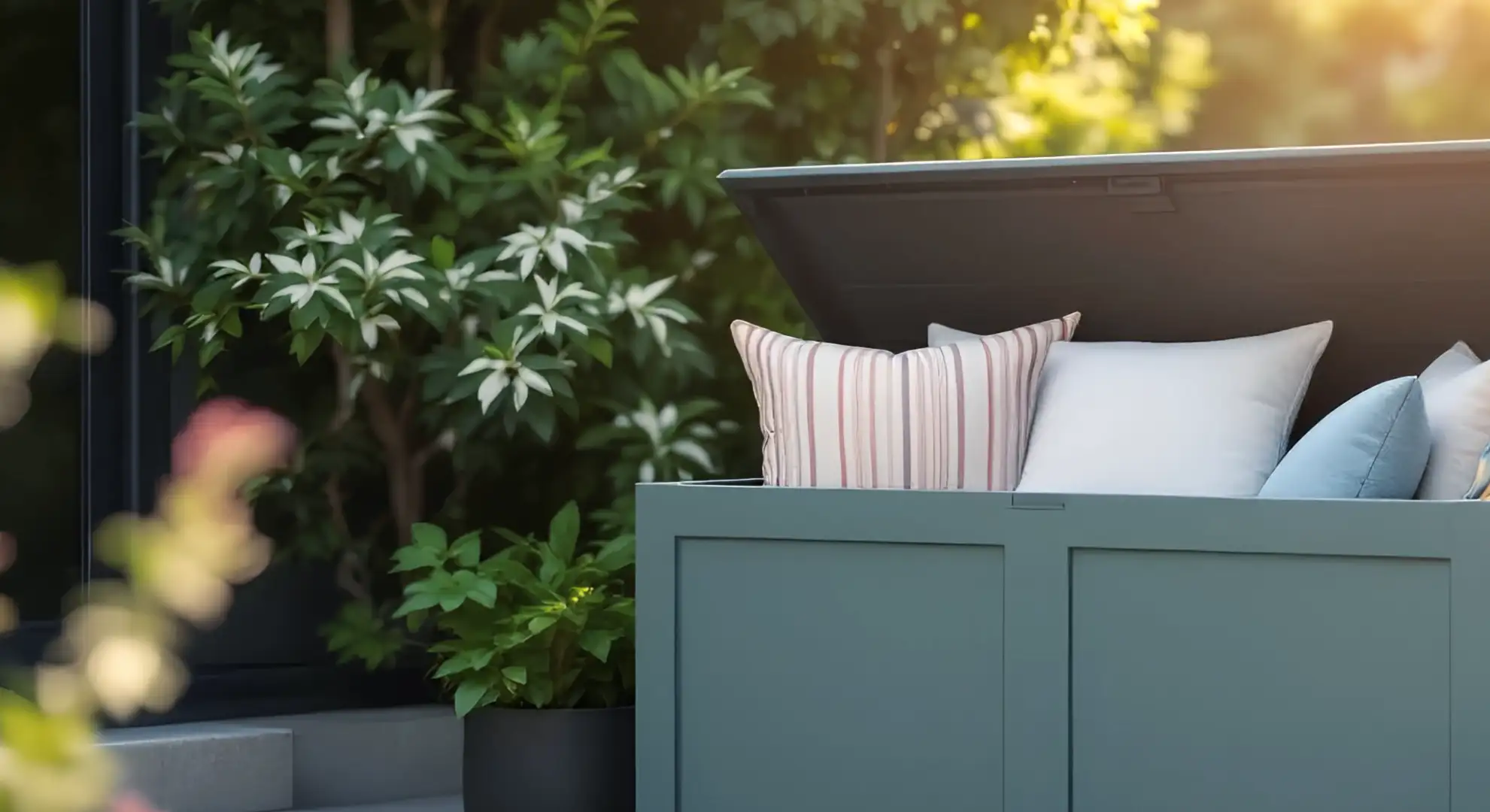
Overfilling the Box
It's tempting to cram as much as possible into your storage box, but overfilling is a common mistake.
- Why it's an issue: An overfilled box puts undue stress on the lid, hinges, and seams. This can prevent the lid from closing properly, compromising the waterproof garden storage capabilities and potentially leading to water ingress. It can also cause hinges to bend or break, and the lid might warp over time, making it difficult to open and close.
- Solution: Be realistic about the capacity you need. If your items barely fit, consider purchasing a larger box or a second, smaller one. Ensure there's enough space for the lid to close easily without forcing it.
Not Securing Contents Properly
While the box itself provides a degree of protection, loose contents can still cause problems.
- Why it's an issue: If items like tools or toys are just thrown in haphazardly, they can shift around, potentially scratching the interior of the box or even damaging each other. In windy conditions, lightweight items could be displaced if the lid isn't fully secured.
- Solution: Use internal dividers or smaller containers within the box to keep items organised. For fabric items like cushions, consider using breathable storage bags before placing them in the box. Always ensure the lid is fully closed and latched.
Ignoring Ventilation
As discussed in the installation section, proper ventilation is crucial for preventing condensation.
- Why it's an issue: If a box is completely airtight or its vents are blocked, trapped moisture from stored items or humidity in the air can condense on the cooler interior surfaces. This creates a damp environment perfect for mould, mildew, and unpleasant odours, especially on fabric cushions or wooden items.
- Solution: Ensure any built-in ventilation points are clear. Avoid packing items too tightly against the inner walls. If you're storing items that might be slightly damp (e.g., recently used gardening gloves), allow them to air dry fully before sealing them in the box. On dry, sunny days, occasionally open the lid for an hour or so to air out the interior.
Placing on Uneven Ground
This is a fundamental error that compromises the box's structural integrity.
- Why it's an issue: Placing your outdoor storage box on an uneven surface puts uneven stress on its base and frame. This can lead to warping, twisting, and misalignment of the lid, making it difficult to close securely and potentially breaking seals. Over time, this can cause the box to become unstable and even collapse.
- Solution: Always place the box on a flat, level surface. Use paving slabs, a compacted gravel base, or ensure your decking is perfectly level. If necessary, use shims or small risers to level the box.
Neglecting Maintenance
Different materials require different levels of care, but neglecting any material will shorten its lifespan.
- Why it's an issue: For wooden boxes, neglecting annual treatment will quickly lead to rot and decay. For metal boxes, ignoring scratches can result in rust. For plastic, a build-up of dirt can make it look unsightly and potentially degrade the surface over a very long period.
- Solution: Follow the specific maintenance guidelines for your box's material. Regular cleaning, timely treatments for wood, and prompt rust repair for metal will ensure your box remains functional and attractive for years to come. Think of it as a small investment of time that protects a larger investment of money.
By avoiding these common mistakes, you'll ensure your garden storage box performs optimally, keeping your garden tidy and your belongings protected for a long time.
Garden Storage Box vs. Shed: Which is Right for You?
When considering outdoor storage solutions, the choice often comes down to a garden storage box or a shed. While both serve the purpose of keeping items outdoors, they cater to very different needs and budgets. Understanding their key differences will help you make the best decision for your garden.
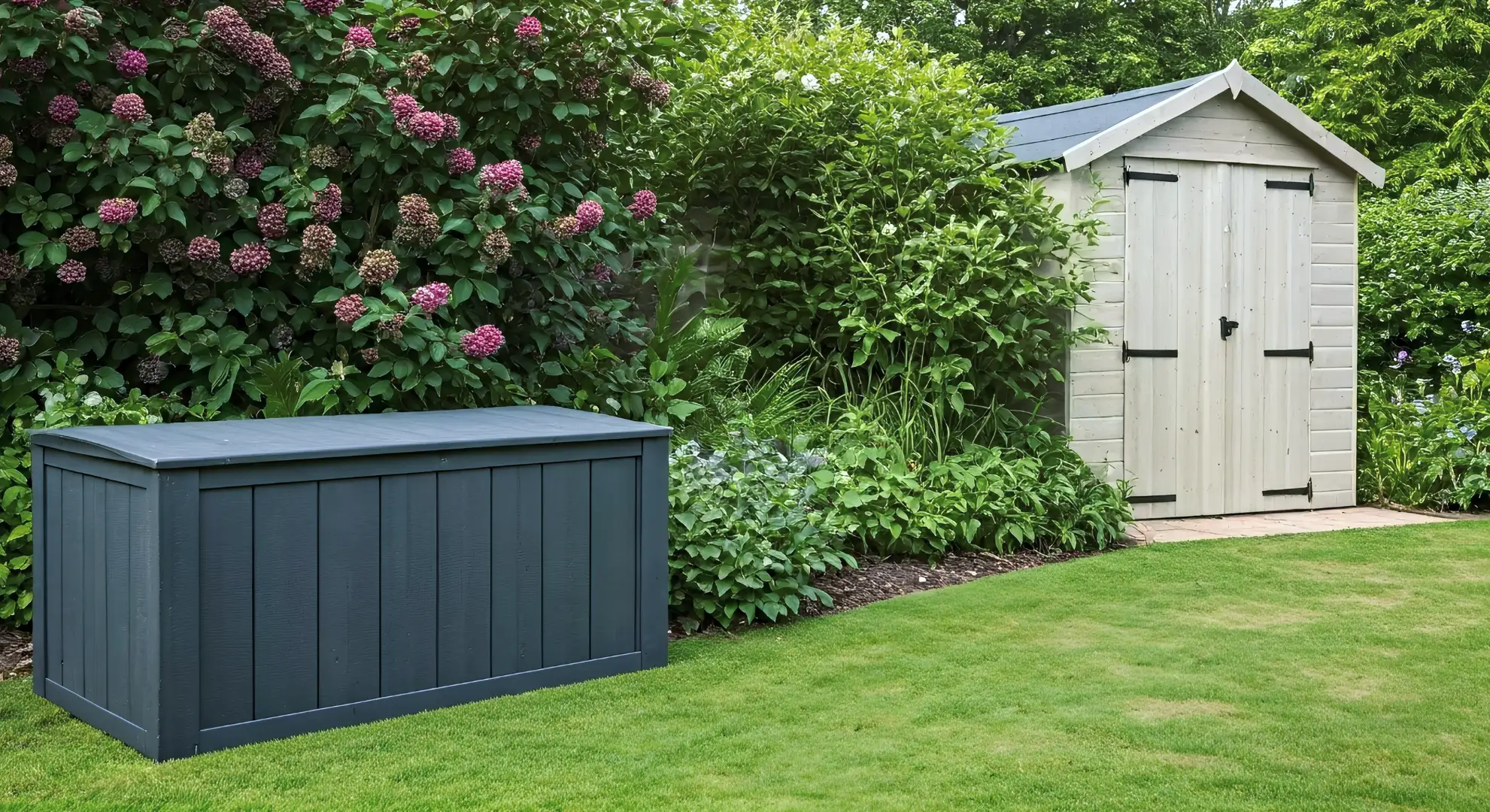
Size and Capacity
This is perhaps the most obvious distinction.
- Garden Storage Box: Typically designed for smaller, more accessible items. Capacities range from around 100 litres up to 600-800 litres. They are ideal for garden furniture cushions, children's toys, small hand tools, barbecue accessories, or even a few folding chairs. They are generally low-profile and don't take up much visual space.
- Shed: Offers significantly more storage volume, ranging from small 4x6 foot sheds to large workshops. Sheds are designed to accommodate much larger items like lawnmowers, bicycles, garden furniture sets, shelving for numerous tools, and even serve as a dedicated workspace. They are a permanent structure.
Cost
The financial outlay for each option varies considerably.
- Garden Storage Box: Generally a much more affordable option, with prices ranging from under £100 for basic plastic models to several hundred pounds for premium wooden or rattan designs. This makes them an accessible solution for most budgets.
- Shed: A more substantial investment. Even a small shed will typically cost several hundred pounds, with larger, higher-quality sheds easily running into thousands. This doesn't include the cost of a proper base or potential installation.
Portability
Consider whether you need to move your storage solution.
- Garden Storage Box: Many plastic boxes are lightweight and come with wheels, making them easily portable. Even heavier wooden boxes can often be moved by two people. This flexibility allows you to reposition them as your garden needs change.
- Shed: A shed is a fixed, permanent structure. Once built, it's not designed to be moved without significant effort, dismantling, and reassembly.
Planning Permission
This is a crucial legal consideration, particularly in the UK.
- Garden Storage Box: In almost all cases, a garden storage box does not require planning permission. It's considered a piece of garden furniture or an accessory rather than a permanent building.
- Shed: Sheds, being outbuildings, may require planning permission depending on their size, height, proximity to boundaries, and location within your property (e.g., if it's in front of the principal elevation). It's always advisable to check with your local council's planning department, especially for larger sheds.
Security
The level of security offered differs significantly.
- Garden Storage Box: While many come with padlock facilities, they are generally less secure than a well-built shed. They are easier to force open, especially plastic models. They offer good protection against casual theft or opportunists but aren't designed for high-value items that need maximum security.
- Shed: A shed, especially one with a robust door, strong hinges, and a good quality lock, offers a much higher level of security. You can often add additional security measures like alarms or window bars. They are better suited for storing expensive power tools, bikes, or other valuable equipment.
Purpose
Ultimately, the best choice depends on what you need to store and how you intend to use your outdoor space.
- Garden Storage Box: Ideal for quick, easy access to frequently used items, for decluttering visible areas like patios, and for items that need protection from the elements but not necessarily high security. They are perfect for small-to-medium storage needs.
- Shed: Best for storing larger items, a wider variety of equipment, or items that need higher security. They can also serve as a workshop or hobby space. They are a more permanent and comprehensive storage solution.
In summary, if you need to tidy up a patio, protect cushions, or store a few hand tools, a garden storage box is likely the perfect, cost-effective, and convenient solution. If you have larger items, require significant storage volume, or need a secure space for valuable equipment, a shed will be the more appropriate choice. Many gardens benefit from having both – a shed for large, less frequently used items, and a storage box for everyday essentials near the house.
Innovative Uses for Your Garden Storage Box
While the primary purpose of a garden storage box is to keep things tidy, their versatile design means they can be repurposed for a variety of creative and practical uses beyond just holding cushions and tools. Thinking outside the box (pun intended!) can add even more functionality to your outdoor space.
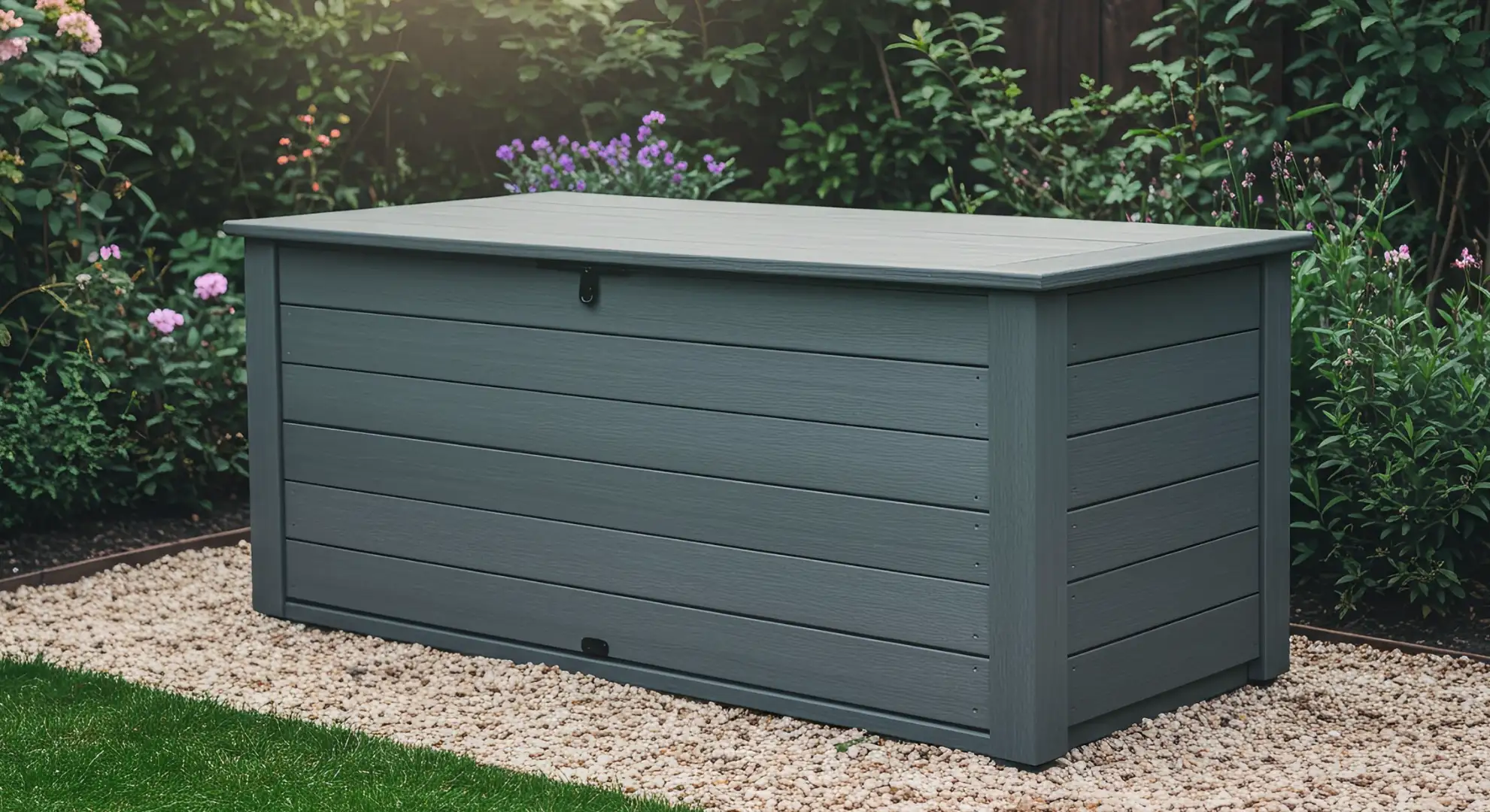
Outdoor Bar/Serving Station
Transform a sturdy, flat-topped garden storage box into a convenient outdoor bar or serving station for entertaining guests.
- How it works: During parties or barbecues, the flat lid provides a perfect surface for drinks, snacks, or even a small portable grill. The interior can be used to store ice, drinks, glasses, or serving utensils, keeping everything close at hand.
- Why it's great: It's a fantastic space-saver, especially for smaller patios, as it serves a dual purpose. When the party's over, simply close the lid, and it reverts to discreet storage. Look for models with reinforced lids for stability.
Recycling Hub
Unsightly recycling bins can detract from a beautiful garden. A garden storage box can provide a discreet and organised solution.
- How it works: Choose a larger box, ideally one with front-opening doors (like a dedicated bin store) or a wide-opening lid. You can place smaller recycling caddies inside for different waste streams (paper, plastic, glass). This keeps your recycling out of sight and protected from animals and the elements.
- Why it's great: It maintains your garden's aesthetic, prevents bins from blowing over in the wind, and keeps odours contained. Ensure there's adequate ventilation if storing food waste bins.
Pet Supply Storage
If you have outdoor pets, a storage box can be a handy place for their essentials.
- How it works: Store bags of pet food, treats, leashes, toys, grooming supplies, or even pet blankets. This keeps these items accessible when you're outdoors with your pet but prevents them from cluttering your home or garden.
- Why it's great: It keeps pet food dry and safe from pests, and ensures all your pet's outdoor gear is in one convenient location. Choose a robust, waterproof box.
Kids' Outdoor Toy Chest
Tired of tripping over scattered toys? A dedicated outdoor toy chest can be a lifesaver.
- How it works: A brightly coloured plastic outdoor storage box can become the designated home for all outdoor toys – balls, sandpit toys, skipping ropes, and more.
- Why it's great: It encourages children to tidy up after themselves (making it a fun "treasure chest"), keeps toys protected from the weather, and prevents your lawn or patio from becoming a minefield of plastic. Look for a box that's easy for children to open and close safely, perhaps with a piston-assisted lid.
Mini Garden Shed for Small Spaces
For those with very small gardens or balconies where a full shed isn't feasible, a large garden storage box can act as a "mini shed."
- How it works: Organise your essential gardening tools, small bags of compost, gloves, and plant pots within the box. You can add small internal shelves or caddies to maximise space.
- Why it's great: It provides a compact, accessible storage solution for basic gardening needs without taking up much room. It's a practical alternative when space is at a premium.
By thinking creatively, your garden storage box can become a truly multi-functional asset, adding convenience and organisation to various aspects of your outdoor living.
Conclusion: Your Tidy, Functional, and Beautiful Garden Awaits
Investing in a garden storage box is one of the simplest yet most effective ways to transform your outdoor space. From reclaiming cluttered patios to safeguarding valuable garden essentials, these versatile units offer a wealth of benefits that enhance both the functionality and aesthetic appeal of your garden.
We've explored the diverse range of materials available, from the low-maintenance practicality of plastic to the natural charm of wood, the robust security of metal, and the stylish elegance of rattan. Understanding the unique properties and maintenance needs of each material is crucial for making an informed choice that aligns with your lifestyle and garden design.
Remember to carefully consider key features such as capacity, waterproofing, durability, and security. Taking the time to assess your specific storage needs, available space, and budget will guide you towards the perfect outdoor storage solution. Proper installation and consistent maintenance, though seemingly minor, are vital steps that will ensure your box remains a reliable asset for years to come, protecting your belongings from the unpredictable British weather and keeping your garden looking its best.
Whether you're looking to declutter, protect, or simply add a touch of organised style, there's a garden storage box out there that's perfectly suited for you. By applying the insights from this guide, you're now well-equipped to choose, use, and maintain your outdoor storage solution, creating a tidy, functional, and beautiful garden that you can truly enjoy.






